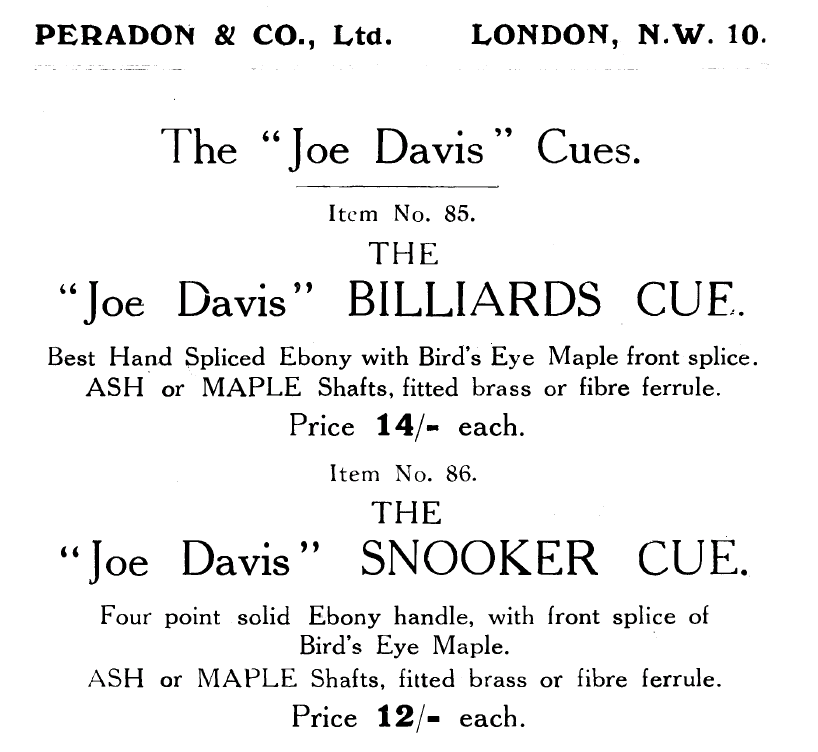I have a friend who bought round a Peradon Joe Davis yesterday. First of all he said it was 100 years old and straight away I thought no way! It turns out that Peradon have only had the patent for 80 years
There were loads of things that pointed to it being new, the varnish hadn't yellowed, the butt looked ebonized, there was a brass joint, it was straight taper, it was around 17-18oz, the badge hadn't yellowed.
It then got me thinking when manufacturers started using brass joints, weighting cues, using ebonized wood, when the straight taper became popular etc. I spent an hour searching Google and this site but couldn't seem to find much history on when a lot of these things came into existence.
There were loads of things that pointed to it being new, the varnish hadn't yellowed, the butt looked ebonized, there was a brass joint, it was straight taper, it was around 17-18oz, the badge hadn't yellowed.
It then got me thinking when manufacturers started using brass joints, weighting cues, using ebonized wood, when the straight taper became popular etc. I spent an hour searching Google and this site but couldn't seem to find much history on when a lot of these things came into existence.


Comment